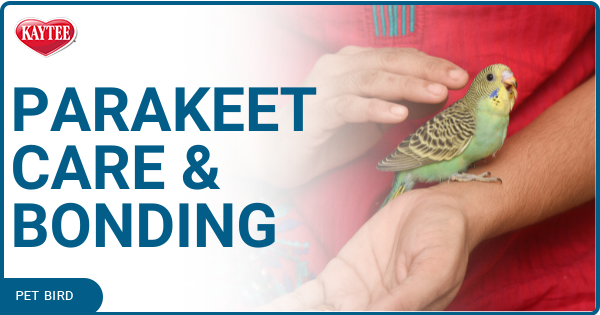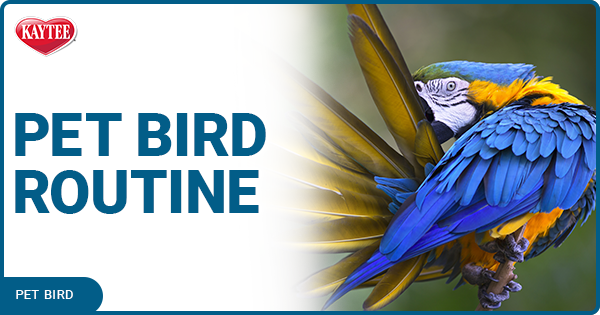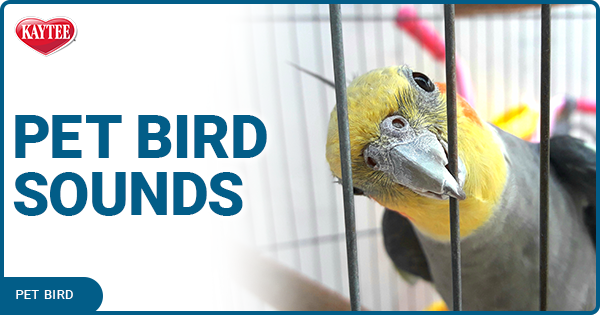There are many charming pet bird species, with different sizes and personalities to enjoy. Knowing the basics of each breed and the care they require can help you choose the best bird to become a new feathered family member.
Most Common Pet Bird Breeds
There are many popular pet bird species, but which of them may make a great companion for you and your family?
Parakeets
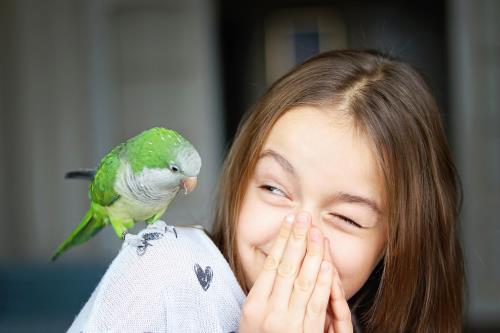
Parakeets are among the smallest parrots, easily recognized by their long tail feathers and bright colors, including white, yellow, green, blue, and violet. The budgerigar, or budgie, is the most familiar parakeet and one of the most popular pet bird species worldwide, and the ring-necked parakeet is another fun pet bird.
These birds are smart and playful, adept at whistles, singing, and minor mimicry of sounds and words. Because of their small size – budgies measure just 7-8 inches from their beaks to the tip of the tail – these birds can be comfortable in smaller cages, as long as it is at least double the size of their wingspan, and they need extra perches and hanging toys like chains and ladders for climbing and exercise. Because they are social, a single parakeet will also enjoy mirrors or mirrored toys for companionship, and noisy toys like bells are always a delight for these chattery birds.
Parakeets are innately seed-eaters who enjoy nuts, fruits, and vegetables to round out their diet. A balanced diet is essential to keep these birds healthy, and pelleted diet formulated for parakeets can be a great staple to ensure proper nutrition.
Depending on species, parakeets live between 8-20 years, making them a good pet for bird lovers of all ages without worrying too much about life changes that may disrupt the bird.
Cockatiels
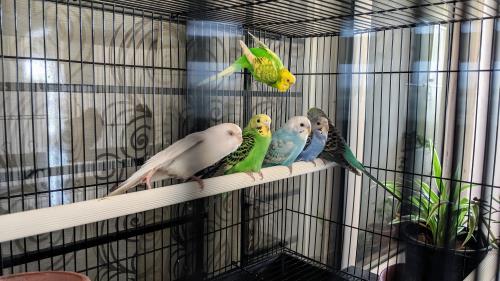
These medium-sized parrots are distinguished by their colorful cheeks, long tails, and long, dramatic crests. They are great whistlers and singers that can be noisy but are generally calm and affectionate with regular socialization. Cockatiels will crave interaction with their human flock, so playtime is essential.
A medium or large-sized cage is best for cockatiels to ensure they have room to move about comfortably. Bar spacing should be no more than ½ or ¾ of an inch to keep the birds safe, without risk of getting stuck. Make sure you set up the habitat before bringing your cockatiel home and make sure placement is in a draft-free, social space where they can see and be seen.
Because cockatiels are adept climbers, climbing toys will keep them active and entertained. Perches with different textures and shapes will help keep their feet and talons in top condition, and perches should be positioned at different heights for more exercise and enrichment. Moving perches around when the cage is cleaned is a great way to keep cockatiels engaged.
Cockatiels can live 15-20 years if they are given proper care and a healthy diet, which should include not only pellets and seed mixes, but also a variety of fresh fruits and vegetables. Seeds can also be used as treats and enrichment for cockatiels, particularly
millet sprays, which will also help exercise their beaks.
Parrots
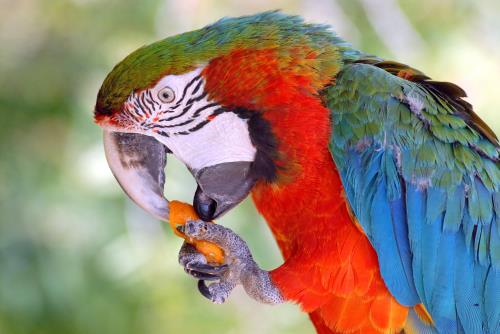
Parrots are a diverse wing of birdlife and there are many popular pet parrots, from lovebirds and conures to quaker parrots, African grays, and Amazons. These birds have shorter tails and bold colors, as well as astonishing intelligence and unending curiosity. To keep their brains active and engaged, and to minimize behavior problems and anxiety from boredom, a larger cage is necessary so parrots have room to explore.
Complex toys can also keep parrots occupied, especially if the toys are colorful, durable for chewing, and offer noisemaking bells and rattles. Foraging toys that can have treats tucked into different nooks are great, and puzzle toys can keep parrots entertained for hours. Shred-ready toys that cater to these birds' need to tear things up can also be great options for playful parrots.
To fuel their energy in the wild, parrots eat nuts, seeds, fruits, vegetables, leafy greens, insects, and even the occasional flower. As a pet, add a pelleted diet to not only provide exceptional nutrition for a healthy parrot but also provide further mental stimulation.
Depending on the exact breed, parrots can live 15-30 years. Because they bond well with their owners, it is essential to remain committed to a parrot's care and well-being for its full lifespan.
Macaws
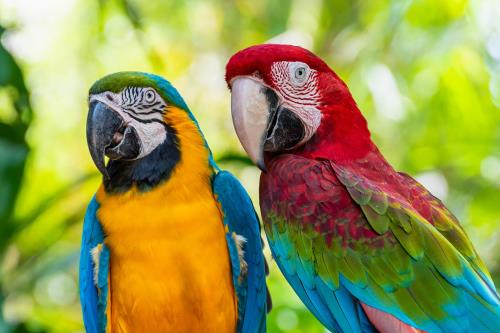
The largest parrots, macaws can measure up to 40 inches from beak to tail tip. This extreme size makes an extra large, tall cage critical, and these birds should also have a play stand and out-of-cage play time available so they do not feel unnecessarily confined.
These are very vocal birds that can be intimidating to novice pet bird owners, but macaws are highly social and bond strongly with their companions. Because macaws can be raucous and their calls are designed to carry long distances, however, it is important to know whether neighbors will mind a friendly macaw nearby. As a result, these birds may not be best in apartments, condos, or any living arrangement in close quarters.
Macaws have powerful bills and can easily destroy small toys. Chew toys are best to keep their bills in shape, especially durable, wood toys, but be aware that these birds will regularly destroy toys, so a macaw owner needs a good budget for toy replacement. Forage toys are another great option, and macaw owners would be wise to bird-proof their homes so these curious birds don't take a liking to chewing on furniture, cords, or other unsafe objects. Daily training and interaction can keep macaws friendly and sociable.
The best diet for macaws includes higher fat foods to fuel their hearty appetites. Meals that include pellets, seeds, nuts, fruit, berries, vegetables, greens, and nectar are great for macaws. Make sure to add a pelleted diet to support additional nutritional needs and create a varied diet.
Because macaws can live 30-60 years or longer, owning one of these birds is a lifetime commitment. Furthermore, responsible pet bird owners should be sure to provide for their macaw's continued care and well-being after the owner passes away.
There are many pet bird breeds to choose from – learning more about the most common breeds can help all pet lovers interested in birds choose the best pet bird to be part of their flock.
Before you can bring a bird into your home, you must purchase everything you will require for his care. Fortunately, all the items your pet will need should be available from your local pet store. The following are the basic must-have supplies.
Habitat
The size of the habitat you need will depend on the bird (or birds) you plan to keep, but a good rule of thumb is to house your bird in the largest habitat that you can afford and have room for in your home. (If you can't purchase or place a very large habitat, you shouldn't acquire a large bird.)
Your habitat should be square or rectangular rather than round to provide your pet with more room to fly and move. Also, the bars should be evenly spaced, not tapered toward the top. In a habitat with tapered bars, a bird can get his toe, wing, or even his head caught where the bars come together, causing serious injury. The habitat should also have a removable grate at the bottom (usually made of metal) above the habitat tray that catches the bird's waste and prevents him from getting to it.
The habitat itself should be made of metal or a combination of metal and plastic (combo habitats for small birds only). Stainless steel (best), powder-coated steel (better), and galvanized after weld (good) suitable habitat materials—other metals may contain harmful toxins that your bird could ingest. Acrylic habitats can also work well for smaller birds because the solid walls prevent mess, but moisture can build up in the habitat if it doesn't have adequate ventilation.
Bedding/Habitat Lining
A variety of materials can be used to line your bird's habitat, but the best options are newspaper or commercial bird litters such as Kaytee Walnut Litter. Both are safe, inexpensive, easy to replace, and clearly show a bird's droppings, which can be important for monitoring his health. (A change in droppings may indicate a potential health problem.) If you suspect health issues due to dropping appearance, place wax paper down as a liner to get a really good look at the droppings.
Food and Water
Stainless steel is the ideal material for food & water cups because it's easy to scrub and disinfect. Although your habitat may come with a couple plastic cups, these can become scratched, allowing bacteria to grow in the crevices. Birds can also be taught to use a water bottle, ensuring they cannot reach it and chew through it.
Food
For long-term good health provide a balanced diet, preferably a pelleted of extruded diet. Supplement with fresh vegetables and fruits depending on the species. High value items like high fat seed and nuts make excellent training treats. A seed mix diet may be deficient in minerals, especially calcium, as well as vitamins and amino acids, so mineral block or cuttlebone should be provided. This should not be necessary if the bird is eating primarily a pelleted or extruded diet.
A breeding female may need additional calcium to form eggs.
Perches
Perches can be made of natural branches, wood, plastic or PVC, rope, concrete, or pumice. Each has its own advantages and disadvantages. Offer your bird perches of assorted materials which vary in diameter. A bird who stands on the same perch consistently may develop foot disorders, especially if it is hard and abrasive or too large for its feet. Ideally the foot should wrap approximately ¾ of the way around the perch. Change out the perches, as you do bird toys this way a bird that likes to stand in the exact same spot will be forced to stand on a different perch.
Bird Bath
Birds bathe in a variety of ways. Some birds love to be misted with fine mist from a bottle of warm water, others love to bathe in a shallow bowl while others still will like to join you in the shower! That's right, you can purchase a shower perch and let your bird spend quality time with you. Baths are very important to a birds' health, remember many birds come from a tropical climate that is very humid and wet. Play with bathing to find out which way your bird likes best, you want bathing to be enjoyable – not stressful! Bathing supplies can be purchased at your local pet store or department store.
Toys and Enrichment
Most birds benefit from having items in their habitat to keep them active and entertained. A wide variety of toys are available, and different birds enjoy different types of toys.
Provide a variety of toy types for your bird in the habitat setup: thinking toys (items that stimulate his mind); action toys (items that make a lot of noise or require your bird to move); comfort toys (items that your bird can enjoy calmly and quietly); and toys to destroy (items he can chew to keep his beak in good condition). You'll quickly see which toys your bird prefers and this will allow you to keep him well entertained. A bored bird can quickly pick up bad, remember birds in the wild are very active and are ever moving and foraging.
There are other ways to enrich your bird's life than just toys, although toys are a necessary item! You can purchase or play video's for your birds with other bird sounds or just interesting audio. A more current approach is to enrich your bird by providing foraging opportunities, treats hidden within toys or homemade items such as a cardboard tube and coffee filters. Be creative, but safe!
Travel Carrier
A travel carrier is necessary for taking your bird to the vet's office and other places. Soft fabric carriers are popular, but if your bird is ill they are difficult to disinfect. Plastic airline kennels are also practical and easy to disinfect if needed. It should also have adequate ventilation and a place to put food and water dishes. If you plan to travel with your pet, select a model which will fit under the seat of an airplane.
It's important to make the carrier a safe and desirable destination, this can be done by using it as a place to offer treats and allow your bird to walk in on its own to fetch those treats. If a bird is caught up and placed aggressively in the carrier, it will quickly become a scary place they don't want to go and each time will become harder and harder to get your bird into it.
Before you can bring a bird into your home, you must purchase everything you will require for his care. Fortunately, all the items your pet will need should be available from your local pet store. The following are the basic must-have supplies.
Habitat
The size of the habitat you need will depend on the bird (or birds) you plan to keep, but a good rule of thumb is to house your bird in the largest habitat that you can afford and have room for in your home. (If you can't purchase or place a very large habitat, you shouldn't acquire a large bird.)
Your habitat should be square or rectangular rather than round to provide your pet with more room to fly and move. Also, the bars should be evenly spaced, not tapered toward the top. In a habitat with tapered bars, a bird can get his toe, wing, or even his head caught where the bars come together, causing serious injury. The habitat should also have a removable grate at the bottom (usually made of metal) above the habitat tray that catches the bird's waste and prevents him from getting to it.
The habitat itself should be made of metal or a combination of metal and plastic (combo habitats for small birds only). Stainless steel (best), powder-coated steel (better), and galvanized after weld (good) suitable habitat materials—other metals may contain harmful toxins that your bird could ingest. Acrylic habitats can also work well for smaller birds because the solid walls prevent mess, but moisture can build up in the habitat if it doesn't have adequate ventilation.
Bedding/Habitat Lining
A variety of materials can be used to line your bird's habitat, but the best options are newspaper or commercial bird litters such as Kaytee Walnut Litter. Both are safe, inexpensive, easy to replace, and clearly show a bird's droppings, which can be important for monitoring his health. (A change in droppings may indicate a potential health problem.) If you suspect health issues due to dropping appearance, place wax paper down as a liner to get a really good look at the droppings.
Food and Water
Stainless steel is the ideal material for food & water cups because it's easy to scrub and disinfect. Although your habitat may come with a couple plastic cups, these can become scratched, allowing bacteria to grow in the crevices. Birds can also be taught to use a water bottle, ensuring they cannot reach it and chew through it.
Food
For long-term good health provide a balanced diet, preferably a pelleted of extruded diet. Supplement with fresh vegetables and fruits depending on the species. High value items like high fat seed and nuts make excellent training treats. A seed mix diet may be deficient in minerals, especially calcium, as well as vitamins and amino acids, so mineral block or cuttlebone should be provided. This should not be necessary if the bird is eating primarily a pelleted or extruded diet.
A breeding female may need additional calcium to form eggs.
Perches
Perches can be made of natural branches, wood, plastic or PVC, rope, concrete, or pumice. Each has its own advantages and disadvantages. Offer your bird perches of assorted materials which vary in diameter. A bird who stands on the same perch consistently may develop foot disorders, especially if it is hard and abrasive or too large for its feet. Ideally the foot should wrap approximately ¾ of the way around the perch. Change out the perches, as you do bird toys this way a bird that likes to stand in the exact same spot will be forced to stand on a different perch.
Bird Bath
Birds bathe in a variety of ways. Some birds love to be misted with fine mist from a bottle of warm water, others love to bathe in a shallow bowl while others still will like to join you in the shower! That's right, you can purchase a shower perch and let your bird spend quality time with you. Baths are very important to a birds' health, remember many birds come from a tropical climate that is very humid and wet. Play with bathing to find out which way your bird likes best, you want bathing to be enjoyable – not stressful! Bathing supplies can be purchased at your local pet store or department store.
Toys and Enrichment
Most birds benefit from having items in their habitat to keep them active and entertained. A wide variety of toys are available, and different birds enjoy different types of toys.
Provide a variety of toy types for your bird in the habitat setup: thinking toys (items that stimulate his mind); action toys (items that make a lot of noise or require your bird to move); comfort toys (items that your bird can enjoy calmly and quietly); and toys to destroy (items he can chew to keep his beak in good condition). You'll quickly see which toys your bird prefers and this will allow you to keep him well entertained. A bored bird can quickly pick up bad, remember birds in the wild are very active and are ever moving and foraging.
There are other ways to enrich your bird's life than just toys, although toys are a necessary item! You can purchase or play video's for your birds with other bird sounds or just interesting audio. A more current approach is to enrich your bird by providing foraging opportunities, treats hidden within toys or homemade items such as a cardboard tube and coffee filters. Be creative, but safe!
Travel Carrier
A travel carrier is necessary for taking your bird to the vet's office and other places. Soft fabric carriers are popular, but if your bird is ill they are difficult to disinfect. Plastic airline kennels are also practical and easy to disinfect if needed. It should also have adequate ventilation and a place to put food and water dishes. If you plan to travel with your pet, select a model which will fit under the seat of an airplane.
It's important to make the carrier a safe and desirable destination, this can be done by using it as a place to offer treats and allow your bird to walk in on its own to fetch those treats. If a bird is caught up and placed aggressively in the carrier, it will quickly become a scary place they don't want to go and each time will become harder and harder to get your bird into it.
Before you can bring a bird into your home, you must purchase everything you will require for his care. Fortunately, all the items your pet will need should be available from your local pet store. The following are the basic must-have supplies.
Habitat
The size of the habitat you need will depend on the bird (or birds) you plan to keep, but a good rule of thumb is to house your bird in the largest habitat that you can afford and have room for in your home. (If you can't purchase or place a very large habitat, you shouldn't acquire a large bird.)
Your habitat should be square or rectangular rather than round to provide your pet with more room to fly and move. Also, the bars should be evenly spaced, not tapered toward the top. In a habitat with tapered bars, a bird can get his toe, wing, or even his head caught where the bars come together, causing serious injury. The habitat should also have a removable grate at the bottom (usually made of metal) above the habitat tray that catches the bird's waste and prevents him from getting to it.
The habitat itself should be made of metal or a combination of metal and plastic (combo habitats for small birds only). Stainless steel (best), powder-coated steel (better), and galvanized after weld (good) suitable habitat materials—other metals may contain harmful toxins that your bird could ingest. Acrylic habitats can also work well for smaller birds because the solid walls prevent mess, but moisture can build up in the habitat if it doesn't have adequate ventilation.
Bedding/Habitat Lining
A variety of materials can be used to line your bird's habitat, but the best options are newspaper or commercial bird litters such as Kaytee Walnut Litter. Both are safe, inexpensive, easy to replace, and clearly show a bird's droppings, which can be important for monitoring his health. (A change in droppings may indicate a potential health problem.) If you suspect health issues due to dropping appearance, place wax paper down as a liner to get a really good look at the droppings.
Food and Water
Stainless steel is the ideal material for food & water cups because it's easy to scrub and disinfect. Although your habitat may come with a couple plastic cups, these can become scratched, allowing bacteria to grow in the crevices. Birds can also be taught to use a water bottle, ensuring they cannot reach it and chew through it.
Food
For long-term good health provide a balanced diet, preferably a pelleted of extruded diet. Supplement with fresh vegetables and fruits depending on the species. High value items like high fat seed and nuts make excellent training treats. A seed mix diet may be deficient in minerals, especially calcium, as well as vitamins and amino acids, so mineral block or cuttlebone should be provided. This should not be necessary if the bird is eating primarily a pelleted or extruded diet.
A breeding female may need additional calcium to form eggs.
Perches
Perches can be made of natural branches, wood, plastic or PVC, rope, concrete, or pumice. Each has its own advantages and disadvantages. Offer your bird perches of assorted materials which vary in diameter. A bird who stands on the same perch consistently may develop foot disorders, especially if it is hard and abrasive or too large for its feet. Ideally the foot should wrap approximately ¾ of the way around the perch. Change out the perches, as you do bird toys this way a bird that likes to stand in the exact same spot will be forced to stand on a different perch.
Bird Bath
Birds bathe in a variety of ways. Some birds love to be misted with fine mist from a bottle of warm water, others love to bathe in a shallow bowl while others still will like to join you in the shower! That's right, you can purchase a shower perch and let your bird spend quality time with you. Baths are very important to a birds' health, remember many birds come from a tropical climate that is very humid and wet. Play with bathing to find out which way your bird likes best, you want bathing to be enjoyable – not stressful! Bathing supplies can be purchased at your local pet store or department store.
Toys and Enrichment
Most birds benefit from having items in their habitat to keep them active and entertained. A wide variety of toys are available, and different birds enjoy different types of toys.
Provide a variety of toy types for your bird in the habitat setup: thinking toys (items that stimulate his mind); action toys (items that make a lot of noise or require your bird to move); comfort toys (items that your bird can enjoy calmly and quietly); and toys to destroy (items he can chew to keep his beak in good condition). You'll quickly see which toys your bird prefers and this will allow you to keep him well entertained. A bored bird can quickly pick up bad, remember birds in the wild are very active and are ever moving and foraging.
There are other ways to enrich your bird's life than just toys, although toys are a necessary item! You can purchase or play video's for your birds with other bird sounds or just interesting audio. A more current approach is to enrich your bird by providing foraging opportunities, treats hidden within toys or homemade items such as a cardboard tube and coffee filters. Be creative, but safe!
Travel Carrier
A travel carrier is necessary for taking your bird to the vet's office and other places. Soft fabric carriers are popular, but if your bird is ill they are difficult to disinfect. Plastic airline kennels are also practical and easy to disinfect if needed. It should also have adequate ventilation and a place to put food and water dishes. If you plan to travel with your pet, select a model which will fit under the seat of an airplane.
It's important to make the carrier a safe and desirable destination, this can be done by using it as a place to offer treats and allow your bird to walk in on its own to fetch those treats. If a bird is caught up and placed aggressively in the carrier, it will quickly become a scary place they don't want to go and each time will become harder and harder to get your bird into it.
Before you can bring a bird into your home, you must purchase everything you will require for his care. Fortunately, all the items your pet will need should be available from your local pet store. The following are the basic must-have supplies.
Habitat
The size of the habitat you need will depend on the bird (or birds) you plan to keep, but a good rule of thumb is to house your bird in the largest habitat that you can afford and have room for in your home. (If you can't purchase or place a very large habitat, you shouldn't acquire a large bird.)
Your habitat should be square or rectangular rather than round to provide your pet with more room to fly and move. Also, the bars should be evenly spaced, not tapered toward the top. In a habitat with tapered bars, a bird can get his toe, wing, or even his head caught where the bars come together, causing serious injury. The habitat should also have a removable grate at the bottom (usually made of metal) above the habitat tray that catches the bird's waste and prevents him from getting to it.
The habitat itself should be made of metal or a combination of metal and plastic (combo habitats for small birds only). Stainless steel (best), powder-coated steel (better), and galvanized after weld (good) suitable habitat materials—other metals may contain harmful toxins that your bird could ingest. Acrylic habitats can also work well for smaller birds because the solid walls prevent mess, but moisture can build up in the habitat if it doesn't have adequate ventilation.
Bedding/Habitat Lining
A variety of materials can be used to line your bird's habitat, but the best options are newspaper or commercial bird litters such as Kaytee Walnut Litter. Both are safe, inexpensive, easy to replace, and clearly show a bird's droppings, which can be important for monitoring his health. (A change in droppings may indicate a potential health problem.) If you suspect health issues due to dropping appearance, place wax paper down as a liner to get a really good look at the droppings.
Food and Water
Stainless steel is the ideal material for food & water cups because it's easy to scrub and disinfect. Although your habitat may come with a couple plastic cups, these can become scratched, allowing bacteria to grow in the crevices. Birds can also be taught to use a water bottle, ensuring they cannot reach it and chew through it.
Food
For long-term good health provide a balanced diet, preferably a pelleted of extruded diet. Supplement with fresh vegetables and fruits depending on the species. High value items like high fat seed and nuts make excellent training treats. A seed mix diet may be deficient in minerals, especially calcium, as well as vitamins and amino acids, so mineral block or cuttlebone should be provided. This should not be necessary if the bird is eating primarily a pelleted or extruded diet.
A breeding female may need additional calcium to form eggs.
Perches
Perches can be made of natural branches, wood, plastic or PVC, rope, concrete, or pumice. Each has its own advantages and disadvantages. Offer your bird perches of assorted materials which vary in diameter. A bird who stands on the same perch consistently may develop foot disorders, especially if it is hard and abrasive or too large for its feet. Ideally the foot should wrap approximately ¾ of the way around the perch. Change out the perches, as you do bird toys this way a bird that likes to stand in the exact same spot will be forced to stand on a different perch.
Bird Bath
Birds bathe in a variety of ways. Some birds love to be misted with fine mist from a bottle of warm water, others love to bathe in a shallow bowl while others still will like to join you in the shower! That's right, you can purchase a shower perch and let your bird spend quality time with you. Baths are very important to a birds' health, remember many birds come from a tropical climate that is very humid and wet. Play with bathing to find out which way your bird likes best, you want bathing to be enjoyable – not stressful! Bathing supplies can be purchased at your local pet store or department store.
Toys and Enrichment
Most birds benefit from having items in their habitat to keep them active and entertained. A wide variety of toys are available, and different birds enjoy different types of toys.
Provide a variety of toy types for your bird in the habitat setup: thinking toys (items that stimulate his mind); action toys (items that make a lot of noise or require your bird to move); comfort toys (items that your bird can enjoy calmly and quietly); and toys to destroy (items he can chew to keep his beak in good condition). You'll quickly see which toys your bird prefers and this will allow you to keep him well entertained. A bored bird can quickly pick up bad, remember birds in the wild are very active and are ever moving and foraging.
There are other ways to enrich your bird's life than just toys, although toys are a necessary item! You can purchase or play video's for your birds with other bird sounds or just interesting audio. A more current approach is to enrich your bird by providing foraging opportunities, treats hidden within toys or homemade items such as a cardboard tube and coffee filters. Be creative, but safe!
Travel Carrier
A travel carrier is necessary for taking your bird to the vet's office and other places. Soft fabric carriers are popular, but if your bird is ill they are difficult to disinfect. Plastic airline kennels are also practical and easy to disinfect if needed. It should also have adequate ventilation and a place to put food and water dishes. If you plan to travel with your pet, select a model which will fit under the seat of an airplane.
It's important to make the carrier a safe and desirable destination, this can be done by using it as a place to offer treats and allow your bird to walk in on its own to fetch those treats. If a bird is caught up and placed aggressively in the carrier, it will quickly become a scary place they don't want to go and each time will become harder and harder to get your bird into it.
Before you can bring a bird into your home, you must purchase everything you will require for his care. Fortunately, all the items your pet will need should be available from your local pet store. The following are the basic must-have supplies.
Habitat
The size of the habitat you need will depend on the bird (or birds) you plan to keep, but a good rule of thumb is to house your bird in the largest habitat that you can afford and have room for in your home. (If you can't purchase or place a very large habitat, you shouldn't acquire a large bird.)
Your habitat should be square or rectangular rather than round to provide your pet with more room to fly and move. Also, the bars should be evenly spaced, not tapered toward the top. In a habitat with tapered bars, a bird can get his toe, wing, or even his head caught where the bars come together, causing serious injury. The habitat should also have a removable grate at the bottom (usually made of metal) above the habitat tray that catches the bird's waste and prevents him from getting to it.
The habitat itself should be made of metal or a combination of metal and plastic (combo habitats for small birds only). Stainless steel (best), powder-coated steel (better), and galvanized after weld (good) suitable habitat materials—other metals may contain harmful toxins that your bird could ingest. Acrylic habitats can also work well for smaller birds because the solid walls prevent mess, but moisture can build up in the habitat if it doesn't have adequate ventilation.
Bedding/Habitat Lining
A variety of materials can be used to line your bird's habitat, but the best options are newspaper or commercial bird litters such as Kaytee Walnut Litter. Both are safe, inexpensive, easy to replace, and clearly show a bird's droppings, which can be important for monitoring his health. (A change in droppings may indicate a potential health problem.) If you suspect health issues due to dropping appearance, place wax paper down as a liner to get a really good look at the droppings.
Food and Water
Stainless steel is the ideal material for food & water cups because it's easy to scrub and disinfect. Although your habitat may come with a couple plastic cups, these can become scratched, allowing bacteria to grow in the crevices. Birds can also be taught to use a water bottle, ensuring they cannot reach it and chew through it.
Food
For long-term good health provide a balanced diet, preferably a pelleted of extruded diet. Supplement with fresh vegetables and fruits depending on the species. High value items like high fat seed and nuts make excellent training treats. A seed mix diet may be deficient in minerals, especially calcium, as well as vitamins and amino acids, so mineral block or cuttlebone should be provided. This should not be necessary if the bird is eating primarily a pelleted or extruded diet.
A breeding female may need additional calcium to form eggs.
Perches
Perches can be made of natural branches, wood, plastic or PVC, rope, concrete, or pumice. Each has its own advantages and disadvantages. Offer your bird perches of assorted materials which vary in diameter. A bird who stands on the same perch consistently may develop foot disorders, especially if it is hard and abrasive or too large for its feet. Ideally the foot should wrap approximately ¾ of the way around the perch. Change out the perches, as you do bird toys this way a bird that likes to stand in the exact same spot will be forced to stand on a different perch.
Bird Bath
Birds bathe in a variety of ways. Some birds love to be misted with fine mist from a bottle of warm water, others love to bathe in a shallow bowl while others still will like to join you in the shower! That's right, you can purchase a shower perch and let your bird spend quality time with you. Baths are very important to a birds' health, remember many birds come from a tropical climate that is very humid and wet. Play with bathing to find out which way your bird likes best, you want bathing to be enjoyable – not stressful! Bathing supplies can be purchased at your local pet store or department store.
Toys and Enrichment
Most birds benefit from having items in their habitat to keep them active and entertained. A wide variety of toys are available, and different birds enjoy different types of toys.
Provide a variety of toy types for your bird in the habitat setup: thinking toys (items that stimulate his mind); action toys (items that make a lot of noise or require your bird to move); comfort toys (items that your bird can enjoy calmly and quietly); and toys to destroy (items he can chew to keep his beak in good condition). You'll quickly see which toys your bird prefers and this will allow you to keep him well entertained. A bored bird can quickly pick up bad, remember birds in the wild are very active and are ever moving and foraging.
There are other ways to enrich your bird's life than just toys, although toys are a necessary item! You can purchase or play video's for your birds with other bird sounds or just interesting audio. A more current approach is to enrich your bird by providing foraging opportunities, treats hidden within toys or homemade items such as a cardboard tube and coffee filters. Be creative, but safe!
Travel Carrier
A travel carrier is necessary for taking your bird to the vet's office and other places. Soft fabric carriers are popular, but if your bird is ill they are difficult to disinfect. Plastic airline kennels are also practical and easy to disinfect if needed. It should also have adequate ventilation and a place to put food and water dishes. If you plan to travel with your pet, select a model which will fit under the seat of an airplane.
It's important to make the carrier a safe and desirable destination, this can be done by using it as a place to offer treats and allow your bird to walk in on its own to fetch those treats. If a bird is caught up and placed aggressively in the carrier, it will quickly become a scary place they don't want to go and each time will become harder and harder to get your bird into it.




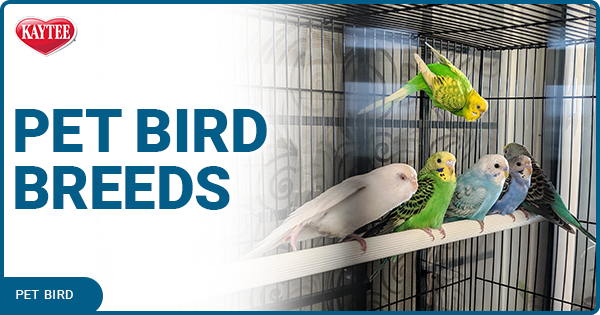
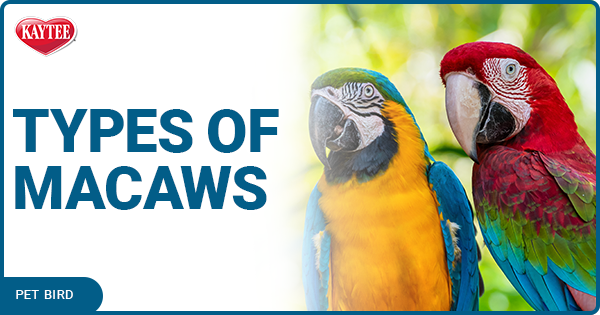
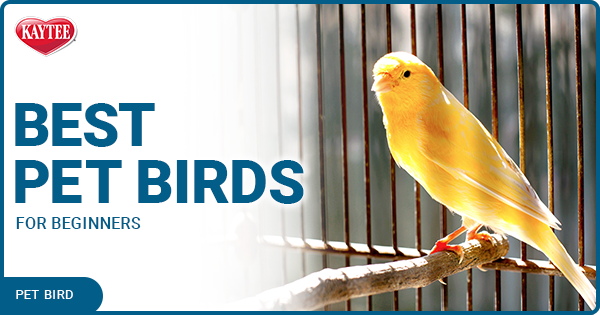
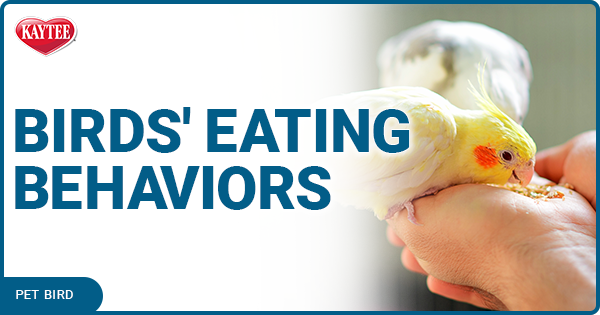
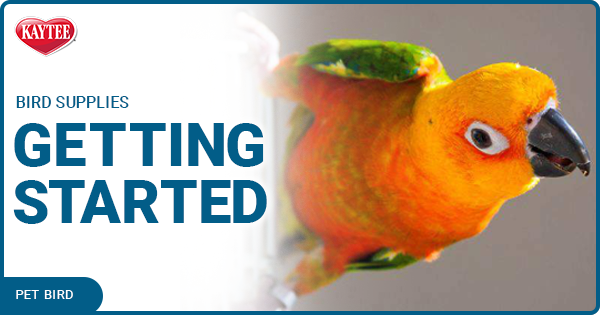
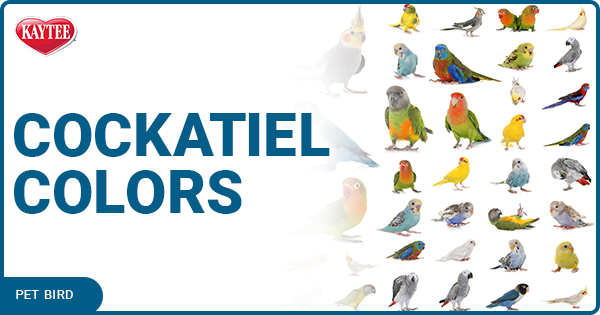
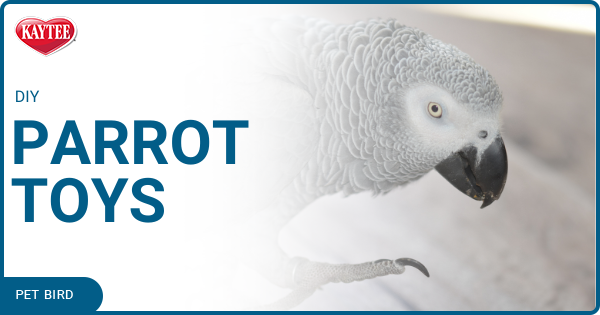
.png?h=315&iar=0&w=600&hash=D97DB36D5E3F21371C65308B485A4F28)
